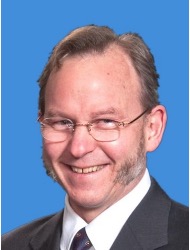Reliable
and Relevant Stress Corrosion Cracking Testing
Peter
L. Andresen*
Shanghai
Jiao Tong University, Shanghai 200030, China
ABSTRACT: This
history of SCC equipment failures in hot water extends back over 180 years, and
the earliest design codes didn’t appear until 75 years later. The early view was that SCC occurred only in
specific materials and above threshold conditions of stress and
environment. Based on this weak
understanding, and for convenience (to obtain quick results), laboratory tests
were simplistic and not well controlled.
Therefore, they produced misleading guidance, and SCC problems
persist. The effects of environment are
always time dependent, and designing for a 40 year lifetime based on a test
lasting a few weeks or months is inherently risky, if not foolish. The last 30
– 40 years has produced dramatic improvements in testing sophistication and
relevance, to the point where crack growth testing can use fully relevant
materials, environments and stresses with sufficient on-line sensitivity to
detect growth rates consistent with a 40 – 80 year lifetime. The response of cracks at static load (SCC)
can be much more difficult to study than at cyclic load (corrosion fatigue),
and extensive experience has led to detailed testing guidance. SCC initiation
testing is more challenging because the only way to perform a fully-relevant
test is to run it for the full (40 – 80 year) lifetime, which is clearly not
feasible. Thus, all initiation tests
employ a large acceleration factor, often >100X, and it is almost never
known how this acceleration affects the results (What is the actual
acceleration? How does it alter the
effect of stress, or environment, or temperature?). Small details of the surface condition can
have large effects, and often are not known for plant components. The exposed area evaluated in SCC initiation
tests is important, and test specimens generally involve a tiny fraction of the
area of plant components. SCC initiation
is stochastic, but testing rarely uses a sufficient number of specimens to obtain
statistically meaningful information. A key element of the modern understanding of SCC is
that immunity is rare, although the concept if immunity is embedded in the
design codes. Designs should be based on
achieving the desired lifetime, which must account for the possible initiation
and growth of cracks. Guidance is provided to make SCC testing more reliable,
reproducible, efficient and relevant.

Dr. Andresen is a former Principal Scientist in GE Global Research Center. His expertise is in the area of corrosion and environmental effects on mechanical properties and integrity of materials. His research has focused on corrosion and environmental fracture of iron- and nickel-base alloys under conditions of interest to the energy and plastics industries. He also studied corrosion fatigue of Cu-Al alloys and has published and consulted widely on pitting, general corrosion, erosion and polarization behavior in aqueous and organic media. In addition to numerous presentations of his research, Dr. Andresen has given many invited lectures at technical and educational symposia.